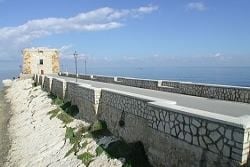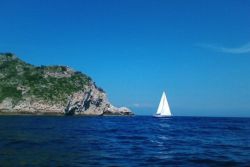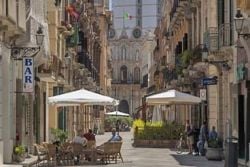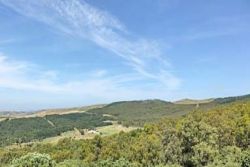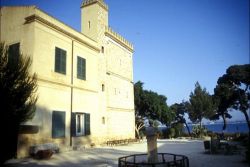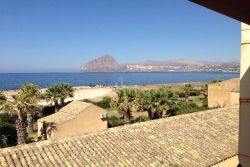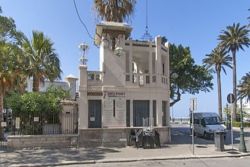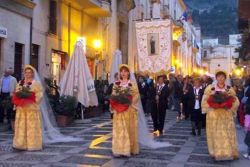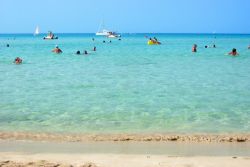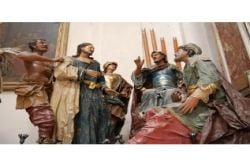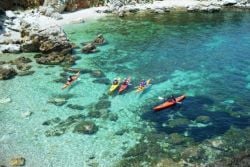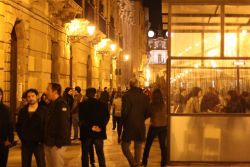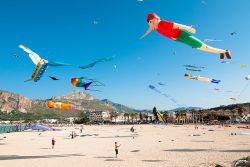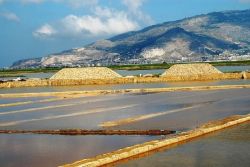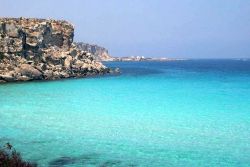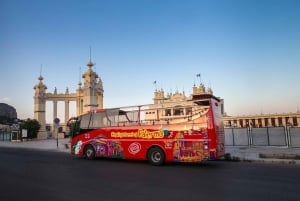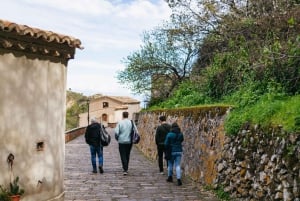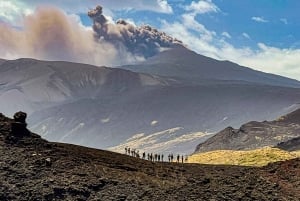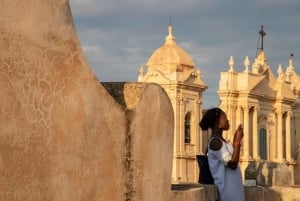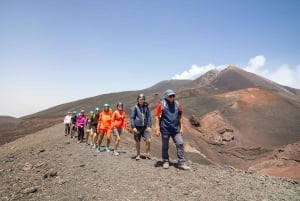Trapani
Trapani is known as the “City of Salt and Sail”. For over 2000 years the lagoon between Marsala and Trapani has been supplying salt, making both towns rich. Trapani established itself internationally in 2005 when it hosted the Acts 8 and 9 of the Louis Vuitton Cup. But the city has far more to offer than salt and sailing, such as a beautiful historic centre, which has recently been restored, chic bars and restaurants, and elegant shops housed in amazing architecture. Within the lagoon lies the small island of Mozia – featuring a Punic town, there is the WWF nature reserve of the salt pans, the naturalistic area of “Bosco d’Arcudaci, the international airport in Birgi, and last but not least Trapani is departure point for the islands of Pantelleria and Ustica, and the magnificent Egadi Islands which are just a few kilometres off its coast. Trapani has very rigid summers and winters, but thanks to the wind the heat is not torrid, what makes the city one of Sicily’s sought-after holiday destinations.
Most visitors usually beeline straight for the historic centre of Trapani - for a good reason: like any true Kasbah it has a maze of narrow streets and alleyways that feature hidden churches, charming piazzas and palazzos, shops, restaurants and bars. Wander far enough and you will always come to the sea. Best starting point for your exploration is the main street “Corso Vittorio Emanuele” which is flanked by elegant Baroque buildings, such as the Bishop’s Palace “Palazzo del Vescovado” and “Palazzo Berardo”. At one end you will see the town hall “Palazzo Senatorio”, the symbol of Trapani, a lovely building that elaborates a façade rising through two orders of columns and statues up to a pair of large clocks. On the other end you will see a Spanish fortification with a squat tower, the Torre di Ligny.
Things to do and see in Trapani
Via Garibaldi
The Garibaldi-street which continues as Via Libertà is Trapanis most spectacular street, flanked by palazzos, town mansions and churches which have been designed by the Aragon in the 18th century. Stop at the splendid “Palazzo Fardello di Mokarta” with its courtyard that is enclosed within a round arch loggia and a portico, and “Palazzo Melilli” with its beautiful doorway of the 16th century.
Torre di Ligny
The Tower of Ligny is one of the most characteristic monuments of the city of Trapani, built in 1669 as a watchtower, and named after the Spanish viceroy La Moraldo, Prince of Ligny. Many of these watchtowers dominated in the 17th century the coasts of Sicily – they served as defences against attacks of the Turks. From the top of the tower extends a fine vista to Erice, the Egadi Islands and San Vito Lo Capo. Today the Torre di Ligny houses a civic museum, exhibiting prehistoric and historical artefacts which have been found in the province of Trapani, covering all historical periods.
The Museo Pepoli is situated in the former Carmelite convent and features a fine collection of artefacts from prehistoric times to the 19th century. On the ground floor you will find Renaissance sculptures. A magnificent marble staircase leads you up to the first floor with the Art Gallery, the archaeological section and the section of industrial art.
At the eastern end of Via Pepoli stands the Carmelite convent, known as the Annunziata. The building is home to Museo Pepoli and to the Sanctuary of the Madonna, a precious marble statue of the Madonna of Trapani, a Madonna and Child by Nino Pisano, which is worshiped throughout the Med. It is the most famous Marian shrine in western Sicily.
In the morning you should pay a visit to Trapani’s fish market at the end of Via Torrearsa. It is just as colourful and noisy as Catania’s famous “Pescheria”, and a great possibility to get to know a bit of Trapani’s daily life, and see some really bizarre examples – not only fishy but also human ones.
The Casina delle Palme is a majestic example of Trapanese Liberty style boasting characteristic decorations, such as tiles, stained glass and wrought iron works. Today the villa houses a tourist information office and offers tastings.
Walking down the “Corso” you will pass the Cathedral of San Lorenzo which was built in 1421, and has been enhanced over the centuries with significant decorations and paintings by leading artists of the region. It features a marvellous Baroque facade of 1740, and is the main location for important religious ceremonies.
Chiesa del Purgatorio – Off Corso Vittorio Emanuele in this church you can see the wooden statues which depict individual scenes from the Passion, and which are paraded around the streets of the historical centre on Good Friday.
Saline di Trapani e Paceco
Apart from the procession on Good Friday, it is the salt pans that characterize Trapani. The extraction of salt is no more the main economic activity of Trapani like it used to be for centuries, but it is nowadays the city’s most fascinating and important tourist attraction. The area is of particular interest for its flora and fauna – the salt pans are a refuge to thousands of migrating birds every year. The pink flamingos in the blue lagoon make a wonderful motive for photos. Well worth a visit are the historical salt museum and the salt marshes of Nubia, same as the salt mill Ettore e Infersa.
Off the beaten track - Buseto Palizzolo
You will sure ask yourself now: “Buseto what?” Admittedly, also many Sicilians do not know this village which lies some 18 km east of Trapani, and we also have to admit that we had not heard of it before. Buseto Palizzolo features some wonderful views to Erice, the Egadi Islands and the Med. But the most wonderful thing is the fantastic park “Villa Comunale”. Highlight is the “witch tree”, a cedar with bizarre boughs. You can walk under cypresses that seem to embrace each other at the “Avenue of Lovers”, and admire a weeping willow with tears. Tears are also the theme of the World War II memorial.
Beaches of Trapani
The coastal areas of Trapani and its province features miles of sandy beaches. Close to the centre there are some small beaches with clear waters, about a few kilometres north-east you will find some very nice lidos. For really beautiful and particular beaches go to the Egadi Islands, Parco dello Zingaro or San Vito Lo Capo. San Vito offers a Caribbean-like white sandy beach and crystalline turquoise waters.
Please have look here for more beaches in Sicily
Bosco Arcudaci – Forest of Arcudaci
A few kilometres from Trapani you will find the green lung of the city – the wooden area of Arcudaci, formerly called Bosco Scorace. It is one of the very few naturalistic areas in the province of Trapani, located in the countryside of Buseto Palizzolo. Bosco Arcudaci features equipped pick nick and barbecue areas (try to avoid coming here on weekends.....), numerous hiking and walking trails, parking areas, rest rooms, a children’s area and is partial accessible for physically handicapped travellers.
Near Trapani
You could plan a day tour to Palermo. Charming Erice can be reached easily by cable car (a tip for disabled travellers). Take a trip along the wonderful coastline to San Vito Lo Capo with its great beach, and the Parco Naturale dello Zingaro. Film fans should look out for Scopello where some scenes of “Ocean’s Twelve” were filmed. Marsala offers an impressive town centre and – as the city is famous for its wines - numerous bars, shops and enotecas, wineries and vineyards invite for a tasting (or two or three....) Want to experience a really magic place? The Temple of Segesta is reachable in 25 car-minutes.
Island of Mozia
Mozia island is so small that you can hardly understand that it once was the most important Phoenician colony of Sicily. Joseph Whitaker bought the isle in the 20th century. Thanks to him a valuable collection of remains has been recovered, amongst them “Il Giovane di Mozia”, the young man of Mozia, a marble statue of unique beauty, which can be admired in the Museum of Mozia. The isle features the ruins of a Punic settlement, such as a “cothon”, a Punic port, an underwater street that was used by Marsala’s farmers until the 1960s, a sacred area for human sacrifices, and a necropolis.
Egadi Islands
A hydrofoil gets you in 15 minutes to these enchanting islands, which are barely touched by tourism. Favignana, Marettimo and Levanzo want to be discovered. Levanzo is home to more than 400 endemic plants which makes it interesting for botanizers. Marettimo is characterized by a crystalline sea, an extraordinary vegetation, and a wide population of wild animals like wild boars, mouflon and red deer. Favignana is the most important and largest island of the mini-archipelago, and a popular holiday destination in summer. See more at Regional Info – Egadi Islands
Restaurants and accommodation in Trapani
Trapani is known throughout Sicily for its superb food! The seafood dishes are just delicious – a must try is the famous fish-couscous (best with freshly caught tuna). Local specialties are the “Insalata Pantescha”, and “Tumma”, sort of a ricotta cheese. We recommend the atmospheric Tavernetta Ai Lumi. Trapani offers every type of accommodation - whatever your taste and budget is.
See more at Accommodation and Restaurants
Nightlife in Trapani
Nightlife in Trapani is maybe not the nightlife you are looking for. The Trapanesi tend to spend their evenings in one of the great restaurants, enjoying fine dining and the fabulous wines of the region. But there are some stylish cafés and chic bars, too. A lively café-bar in the historic centre is “Colicchia”, you can dance and party at “Otto e Mezzo”, and at the beach in July/August at “Lido Paradiso”.
More places where to go in the evening you will find at Restaurants and Nightlife
Shopping in Trapani
In Trapani one of the pleasures is finding small shops that specialize in leather accessories, local crafts, ceramics and typical products of the region. Around Via Torrearsa and Via Garibaldi there are many shops selling elegant clothing. A tasty souvenir in the form of salt, olive oil and other delicious things you will find at “Sikelia”.
Find more places where you can spend your money at Shopping
Events in Trapani
Processione dei Misteri
On Good Friday the “Mysteries Procession” is celebrated in Trapani, when the city’s guilds carry 20 groups of sculpted figures from the 17th century around the historical centre all day and the following night. It is a blaze of colours, sounds and lights. Dating back to the year of 1612, this centennial tradition of Spanish origins appeals every year thousands of believers and visitors from all over the world. It is one of the oldest religious events in the whole of Europe. FInd more events in Sicily here
Kite Festival & Cous Cous Fest
The Kite Festival and the Cous Cous Fest do not take place in Trapani, but in San Vito Lo Capo. Make sure to go there when you are in the area.
Sailing the Med
Trapani is the shortest crossing from Sardinia. It is essential to report arrival and departure to the coastguard on VHF. Sailors will love this harbour, as it offers most services, including travel hoist, fuel berth and a crane, and customs officials and police are very helpful.
Approach the harbor from the south – beware of the shallows a mile from the harbor. Yacht berths are north of the entrance, and – as this harbour is very popular – the berths are often crowded. Touristic ports in Sicily are here
How to get to Trapani
By car
We highly recommend going to Trapani by car or, if you are flying to Trapani, to rent a car at the airport. Trapani is connected to Palermo by the A 29, by SS 187 to the northern towns and by SS 115 to Mazara del Vallo and Marsala. You can reach the airport of Trapani via SP 29 and SP 21 in between 15 min, Palermo’s airport in c. 45 minutes via the A 29. A drive to Taormina in the east of Sicily takes about four hours – just for information.
By bus & train
There are two different train lines going from Trapani to Palermo – one passing Marsala, Mazara del Vallo and Castelvetrano, the other passing Alcamo. Going by train to and from Trapani is a bit of a problem as there is only one railway track. We recommend taking a bus.
There are frequent buses running between Trapani and all cities of Sicily’s west. The bus station is close to the train station.
By airplane
Trapani’s airport in Birgi is served by both national and international airlines. There are flights to London, Dublin, Paris, Brussels, Barcelona and Frankfurt (amongst others).
By ferry
Passenger traffic is one of the main traffics in the port of Trapani – there are about 1 million passengers in transit per year. Trapani is connected by ferries and hydrofoils to Castellammare del Golfo, San Vito Lo Capo, Mazara del Vallo, Marsala, the Egadi Islands, the island of Pantelleria, Cagliari (Sardinia), Naples and Tunis See more here
By cruise
Cruise liners usually berth at Garibaldi pier, from there it is easy to reach the city centre – you just have to cross the street. The next beaches are about 1 km from the pier. Taxis you will find outside the maritime terminal and in Via Ammiraglio Staiti at the hydrofoil embarkation to the Egadi Islands (500 m from pier). Departures and tickets for city sightseeing tours by open bus and tourist train at the maritime terminal. For tours to Erice take a taxi or a bus to the cableway station.


